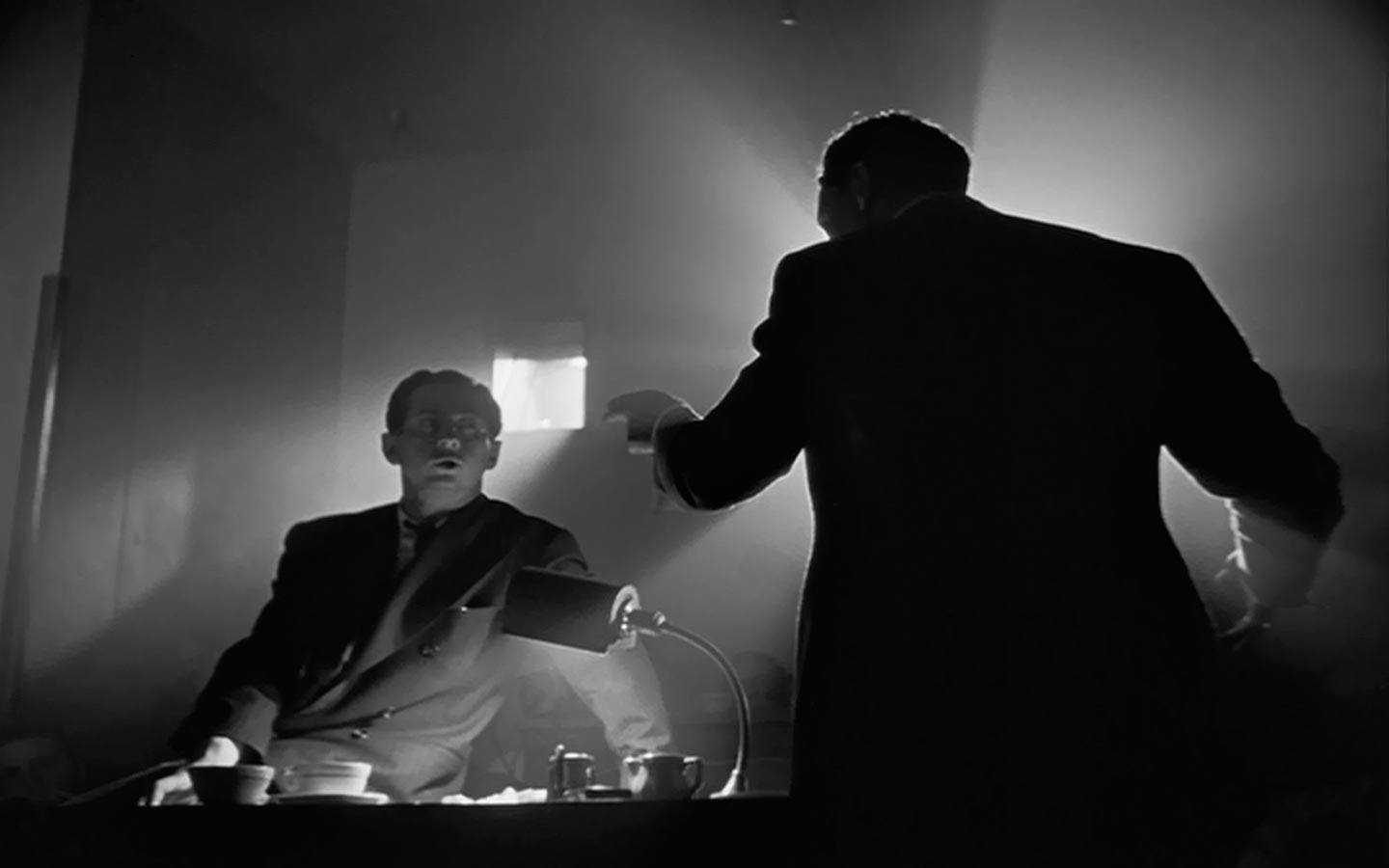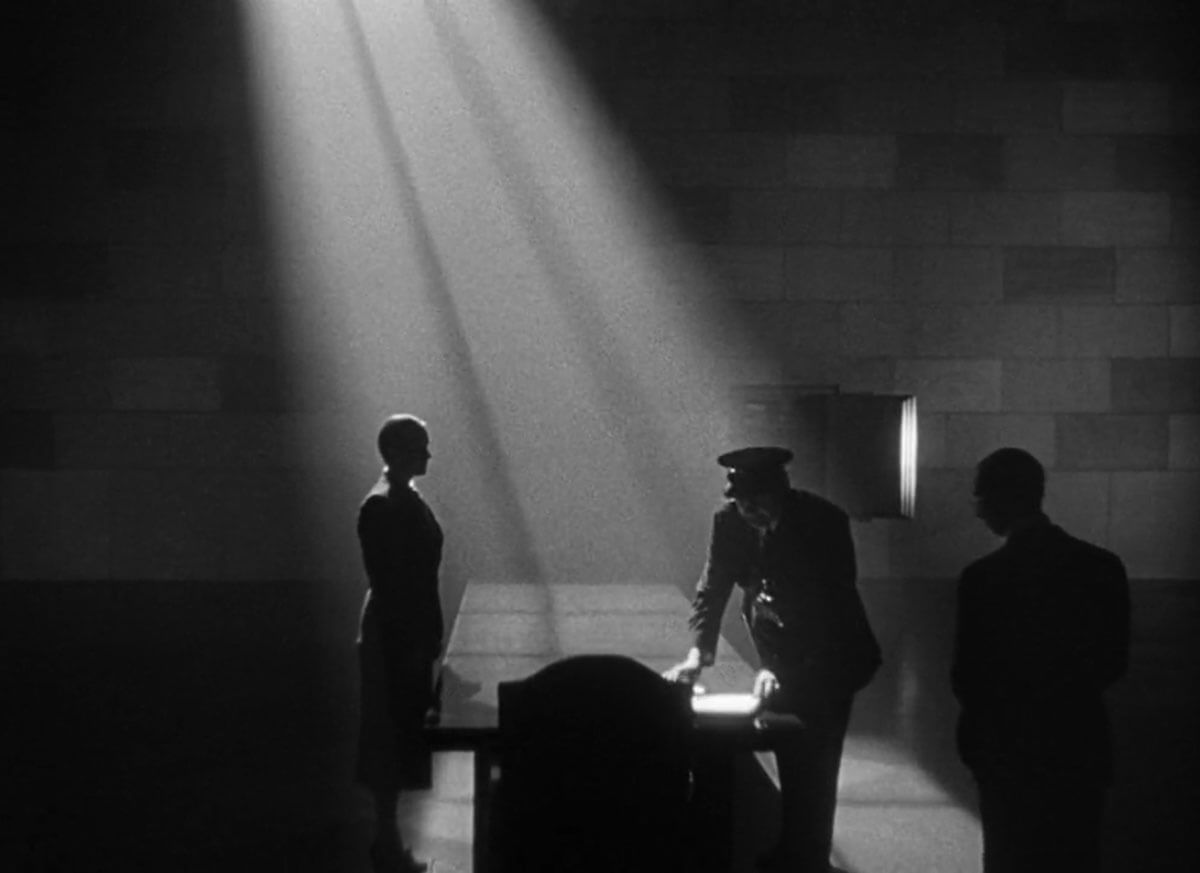One such innovation was a technique known. The lighting has to also do the work potentially done by color palette and tone.

The Lighting Of Citizen Kane Media Design And Criticism
The director of Citizen Kane had the choice of making.

. Gregg Toland the cinematographer Welles chose for Citizen Kane had used the technique in an earlier film he had worked on The Long Voyage Home but Citizen Kane marked the first time it was used so extensively or effectively. In the classic film Citizen Kane hard lighting and an austere use of shadowing strengthen the emotional intensity of scenes in such gloomy settings seen often throughout the filmAlong with lighting scene space is carefully employed to portray depth and emptiness in each selected shot. For example Charles Kane was almost always under high key lighting which highlighted his significance to the plot.
From the use of this extreme backlight Welles concealed the identity of. Techniques such as single source lighting creative use of shadows montage obscure camera angles and deep focus photography make the film more enthralling visually but also contributed to the narrative and many of the themes. Citizen Kane is a 1941 American drama film directed co-written produced by and starring Orson Welles.
This technique added the greatest contribution to the cinematography of Citizen Kane by enhancing its plot development and the audiences perspective. Its more than just dark shadows and bright lights. Throughout the film lighting sets the mood of the scene and helps the viewer distinguish between who is a good character and who is a bad character.
Citizen Kane introduced Hollywood to the creative potential of other cinematic techniques as well. The Light of Citizen Kane. The Use Of Light In The Film Citizen Kane.
The use of lighting styles is necessary in films to bring attention to the scene and to be able to produce an interesting film. For example in Citizen Kane extreme deep focus diverse camera angles including low angles that exposed set ceiling and unusual use of lighting and deep shadows all. This was Welless first feature film.
Use of a subjective camera unconventional lighting including chiaroscuro backlighting and high-contrast lighting prefiguring the darkness and low-key lighting of future film noirs inventive use of shadows and strange camera angles following in the tradition of German Expressionists. Welles use of lighting throughout the film directs the audiences focus expresses key aspects of characters. With this film Welles introduced many new filmmaking innovations.
In Citizen Kane Orson Welles uses creative innovative lighting techniques to send the audience messages about the characters and the themes at hand in each scene. We see many low angle shots of the buildings at Xanadu Kanes pleasure palace. The various camera techniques used by Orson in Citizen Kane were backlight Another dramatic technique used by Welles Throughout the film was the use of extreme backlight.
In the times when films were black and white the use of light is not easily visible. Three point lighting fill light key light high key and low key lighting top or under lighting and many more. Being the third chapter in the movie we can already see how prevalent this particular component of mise-en-scene is the moment the film commences through the moment the big finishing letters The End fade on.
Citizen Kane is a 1941 American drama film produced by directed by and starring Orson WellesHe also co-wrote the screenplay with Herman J. The use of lighting reflects within color because it gives the audience more to look at and it becomes very noticeable when the light changes for a specific scene. Orson Welles used the cameo lighting technique frequently in his 1941 masterpiece Citizen Kane.
Mock newsreel cinematography 312 1227. Lighting is a crucial element of mise-en-scene in all films but especially so in black and white cinema. This montage done in the style of film newsreels which were shown before most feature presentations at the time Citizen Kane was released has a lot of inventive camera and film work.
Use Cameo lighting to accentuate actors and props Orson Welles used cameo lighting and other mixed lighting techniques throughout Citizen Kane as a way to direct the eye of the viewer and give emphasis to the most important elements in a scene. Of all the scenes with outstanding lighting techniques used in Citizen Kane one of the scenes that stood out most to me was Rosebud Dead or Alive. Posted on September 4 2015.
In Citizen Kane Orson Welles lighting decisions allowed him to convey more implicit messages about the action on screen and reveal an almost opposite. Often the use of lighting in Citizen Kane cannot be captured in still images. Approaching the end of the film there is a scene.
The shadow given to him represented how in the dark he had became over the course of his life. In cinematography there is different types of lighting such as. In Citizen Kane Orson Welles and Greg Toland brilliantly use techniques like lighting camera angle and scene composition to evoke emotion and feeling within the viewer.
MankiewiczThe picture was Welles first feature film. Orson Welles used the photography of his 1941 film Citizen Kane to emphasize aspects of the film he wanted viewers to focus on and to remove non-essential information from the frame. Citizen Kane is considered by many critics and experts to be the greatest film ever madeFor 50 consecutive years it stood at number 1 in the British Film Institutes Sight.
Some of the striking stylistic elements of Citizen Kane include its expressionistic use of lighting its dizzying variety of camera angles and movements its range of camera positions from the extreme close-up to the panoramic longshot its use of wide angle lenses and deep focus to create scenes of a three dimensional background and its inversion of the common setup shot. This was accomplished through various camera techniques including manipulation of angles and proxemic patterns. Up to 24 cash back Its components brought together the following aspects.
Deep focus a stylistic technique that uses wide-angle and small lens apertures to focus simultaneously on near and far planes was used in many scenes within this film. Experimenting with creative storytelling techniques and non-linear plot construction the director treated the time parameter sensitively replacing time continuity of real scene by a subjective continuity controlling the rhythm and. In many scenes light is used dynamically.
Either the light is moved or altered during a scene or a character interacts with the light by moving through it in the scene. The various camera techniques used by Orson in Citizen Kane were backlight Another dramatic technique used by Welles Throughout the film was the use of extreme backlight. The Lighting of Citizen Kane.
Among many other elements exercised lighting and space greatly. The Light of Citizen Kane One aspect that was striking regarding Citizen Kane was the use of lighting to emphasize the importance of the characters. Some of the innovations were in cinematography storytelling techniques and special effects lighting.
Citizen Kane is a 1941 drama film directed by Orson Welles and praised for its innovative sound and editing methods in cinematography.
Lighting In Citizen Kane Blunt Comedy Reviews By Conor Chepenik

Cameo Lighting Explained What It Is And How To Use It Videomaker

6 Ways To Citizen Kane Your Film

6 Ways To Citizen Kane Your Film

Mise En Scene In Citizen Kane Lighting Media Design And Criticism

Old Movies With Great Cinematography Szukaj W Google Filmmaking Cinematography Film Noir Photography Beautiful Cinematography

Cameo Lighting Explained What It Is And How To Use It Videomaker

0 comments
Post a Comment